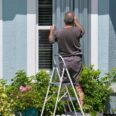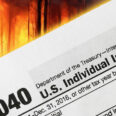
[Updated] Three men died, another was hospitalized in grave condition and three others were recovering after six separate incidents of suspected fentanyl overdoses in Pasadena on Friday and Saturday, authorities said.
The overdoses took place at six different locations throughout the days, Pasadena police Lt. William Grisafe said. Two of the victims were found at the same location.
The seven victims were all men who ranged in age from their 30s to their 60, he said.
Two of them died at hospitals, he said. Another was pronounced dead on scene.
Another of the overdose victims was listed in grave condition and not expected to survive, according to Grisafe.
The other three patients were doing well and expected to be released from hospital care soon, he said. At least two of them had been revived by paramedics or medial staff using the anti-opioid overdose nasal spray known as Narcan, or naloxone.
A police official Sunday morning said there were no similar incidents overnight.
Suspected fentanyl overdoses are not common in the city, and Grisafe described Friday’s wave of overdoses as “an anomaly.”
The overdoses were reported between 4:30 p.m. Friday and 1 p.m. Saturday, officials said.
Detectives were working to determine whether there was a link between the cases, such as the source of the drugs, Grisafe said.
Many times, fentanyl overdose cases involve people who believe they are taking a different drug that has been laced with fentanyl without their knowledge, Russo said. It was not yet clear whether that was the case in Friday’s overdoses.
While officials said Friday’s large number of overdoses was highly unusual, the opioid problem, in general, has hit the local community hard in recent months and years.
Los Angeles County has been seeing more than 450 opioid overdose deaths over the past year, according to Pasadena Fire Department Battalion Chief Tim Sell. While statistics for recent months were not yet available, he said it appeared the problem was getting worse.
All Pasadena Fire Department fire engines, trucks and ambulances are equipped with naloxone, he said.
The vast majority of police officers also carry the potentially life-saving nasal spray, which can counteract the effects of an opioid overdose, according to Grisage.
As of early this month, fire officials had administered naloxone 57 times, Sell said.
Police administer the drug as well, but on a less frequent basis, Grisafe said. Officers had used the drug fewer than five times so far this year.
Anyone with information can reach the Pasadena Police Department at 626-744-4241. Tips may also be submitted anonymously to L.A. Regional Crime Stoppers at 800-222-8477.
See also:
Opioid Epidemic Shows No Signs of Waning in Pasadena, Nation




















One thought on “7 Suspected Fentanyl Overdoses in Pasadena Leave 3 Dead, 1 in Grave Condition”
There are so many young people dying in hotel/motel rooms and at home from fentanol. It is a serious health crisis and must be dealt with immediately. The sad truth is that many are not aware that they are taking a fatal dose by consuming only one small pill. Accidental deaths have become an everyday occurrence in the larger cities, and it has been increasing at arming rates. There must be stricter penalties for the people who are distributing these deadly drugs. Our children and young adults must be made aware of how small amounts have contributed to deadly consequences. Perhaps a scared straight approach would bring the growing mortality rate to light. Death in young adults during the pandemic is on the rise. Having to shelter in place has put many at risk. People who have never been depressed are now becoming withdrawn. Not having social interactions with friends can lead to lonliness, sadness, feeling isolated, hopelessness, and uncertainty about the future. All of these feelings can cause depression, and the desire to self medicate. Talk to children, and to young adults whenever possible. Let it be known to all. We can save lives through awareness. Get the word out to anyone and everyone. Because it’s not just poor neighborhoods, and homeless communities that are affected. It’s middle, and upper class communities as well.